How a Chilean Architect Ended up Participating in the Reconstruction of Ukraine
A Soviet-era train took him from Poland. He traveled 23 hours to reach Irpin, the horror, a war-torn city in Ukraine. Fifteen days were enough for Cristián Wittig, an architect and alumnus of UC Chile, to fully commit himself to the task of rebuilding the city. Irpin had 80% of its facilities destroyed by the Russian attack in March 2022.
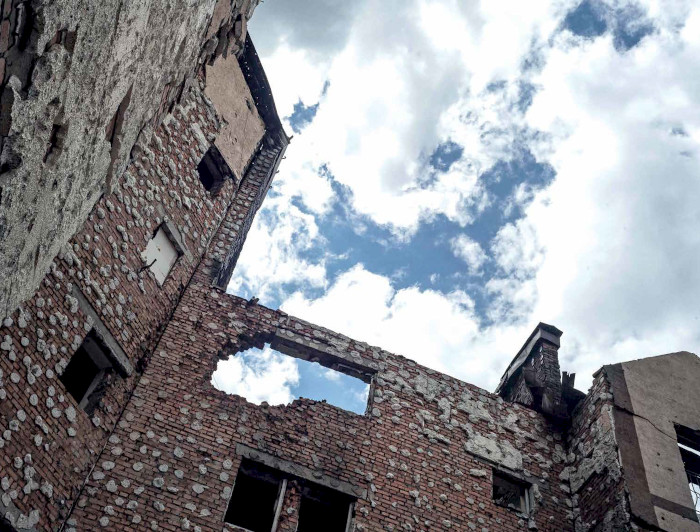
photo_camera "When I was invited to visit Irpin to make decisions about the reconstruction, something happened to me on an emotional level and I accepted," says architect Cristián Wittig (Photo credit: Cristián Wittig)).
On March 6, 2022, the Ukrainian city of Irpin (Ukraine) was shelled in the midst of an evacuation of civilians. The city's infrastructure was 80% destroyed and, according to official figures, 279 civilians were killed. The attack on this town shocked the world because of the coldness of the action, it was attacked during an evacuation.
A couple of months later, Cristián Wittig, a 50-year-old Chilean architect, was asked to collaborate in the reconstruction of the city from Chile. Shocked by the tragedy, Wittig was quick to accept. In June, 2022, a second call would give him the shock of his life: "We need you to come and see Irpin." He would have to raise money to pay for the expensive trip, but he knew he had to go.
Today, few months after his visit, he has put aside other projects to focus entirely on the city's reconstruction plans. “I wake up and fall asleep thinking about this,” he confessed.
The Moment the City was Bombed
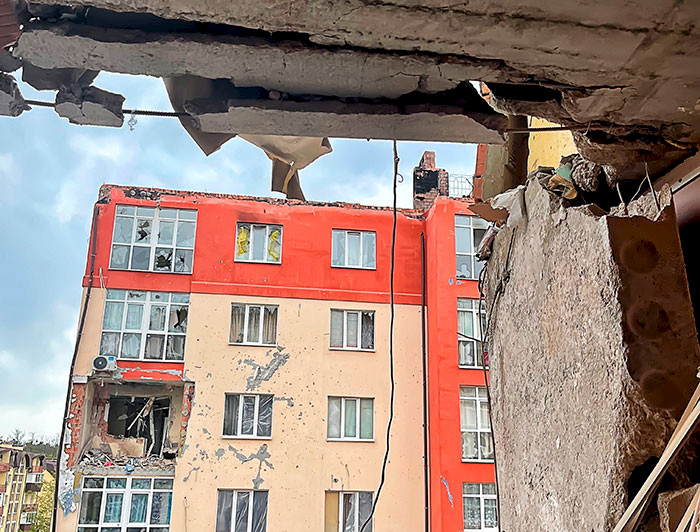
On February 24, 2022, Russia's attack on Ukraine began and, with it, the ongoing, large-scale armed conflict. In the beginning, the attacks were focused on destroying the satellite cities of Kyiv, the capital of Ukraine.
Among them, Irpin was crucial, because it is located northwest of the capital, about 20 kilometers away, and is the last obstacle to reach Kyiv. The city was bombed on March 6th while its citizens were being evacuated.
In the escape operation, small groups of civilians were accompanied by Ukrainian soldiers, who were to protect them from any attack. But in the midst of the escape, the mortar shelling began, right along the proposed flight path.
"Irpin and other places are called hero cities, because they are the ones that have stopped the advance so that the Russian army could not reach Kyiv."
According to Cristián Wittig, a few days after the attack on Irpin, he received a call from Irina Yarmolenko, a councilwoman from Bucha (Irpin's neighborhood). She contacted him to invite him to join a team of international consultants, envisioning the early withdrawal of Russian troops from the territory.
Thus began the online work meetings with professionals from all over the world, where Wittig was the only Latin American present. “I had previously done a couple of consultancies for ECLAC and all those jobs are included in a pool of consultants, a Global Marketplace. Invitations to bid for studies and analyses in cities are always coming in."
“Irina told me that they were thrilled that I had studied at UC Chile and that I was Chilean, because I had experience with the reconstruction after the 2010 earthquake. She also thought it was relevant that I am a consultant to the UN in the field of educational infrastructure, because all these buildings had been destroyed, from kindergartens to university campuses. They were the first to be destroyed, because they are places where the community gathers and take refuge."
Irpin is a Ukrainian city located along the Irpin river, about 20 kilometers northwest of the capital, Kyiv. According to official figures, in 2021 its estimated population was 62,456 inhabitants.
On March 25, 2022, by a decree of Ukrainian President Volodymir Zelensky, Irpin was proclaimed a heroic city, in recognition of its defense during the Russian invasion.
Conversations on a Soviet-Era Train
After two months of remote work, Wittig was asked to travel to Ukraine to evaluate certain aspects on the ground.
"When I was invited to visit Irpin to make decisions about the reconstruction, something happened to me on an emotional level and I accepted. They waited for me with food and lodging, but they had no money for the ticket.”
The trip was made possible by a number of factors. He received donations from the La Fuente Foundation, the pastoral team of the Sagrados Corazones de Manquehue school, and a couple of individuals.
Thus began his journey. He flew to Madrid, Berlin, and then arrived in Warsaw, Poland. There he had to board a train that he felt transported him to another era, as it was an old train from the former Soviet Union.
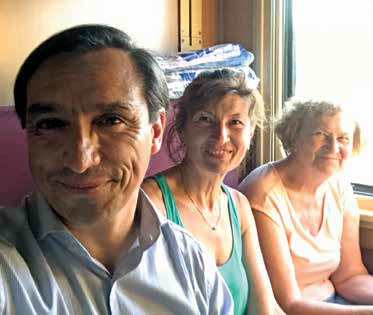
“[The train] was not air-conditioned and had three-berth cabins attached to the walls. It was full of Ukrainian families returning to see what had happened to their homes. I was in a cabin with two women who were from Kyiv, but we could not communicate as not many people speak English in Ukraine. A little girl who knew the language helped me and translated for me."
The trip took 23 hours, although by car it would have been much less. According to Wittig, the train had to make a 12-car gauge change at the Ukrainian border: "Gauge is the type of wheel for the type of rail. The European community has a different gauge than that of the Soviet Union, which is the one installed in Ukraine. During this process we were all sent to sleep. I was lying in the bunk closest to the ceiling, at 37°C with no air conditioning. It was at that moment that I thought for the first time: ‘What did I get myself into?’”
—What were the people traveling with you like?
“I thought people in that part of the world were cold and distant, but every time someone heard me speak English, they greeted me. It was because they knew I was going to help. People from other cabins would come and hug me. I didn’t expect that.
The conversation with the ladies on the train was lovely, because they introduced me to the Ukrainian culture. They told me a lot of things that don't appear on the news. For example, that there are many Russians living in Ukraine and that this conflict that divides them is complex because Russians and Ukrainians are intertwined.
These women had taken refuge in Switzerland at the time of the invasion of Irpin. One of them had lost her husband and the other a son. I think if I had flown directly [to Ukraine], I would have been less prepared for what I was about to witness.
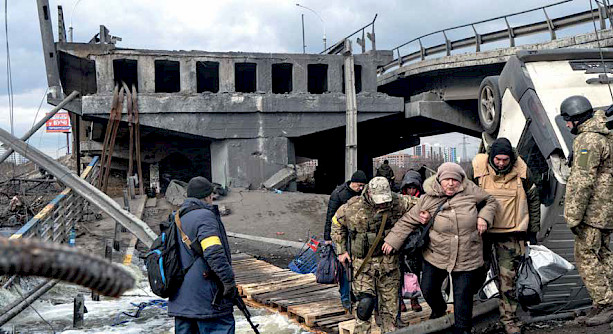
Ramshackle Construction
After the train arrived in Kyiv, the Chilean architect travel by car to Irpin.
“As I was arriving, I began to see the mass graves, the open ditches, the destruction, the state of the city, of the green areas, of the squares, it was very shocking. What they did was a kind of extermination.”
—What are the city and its buildings like?
—There are many forests, lakes, and lagoons. Building is very cheap, because they don’t have to resist earthquakes or strong winds. They only need to insulate to face the cold winter. This makes the materials they use very light. Their entire infrastructure was incredibly flimsy. If you punch the wall, you get to the other bedroom. That is why there was so much destruction: The mortar bombs fell and the shock wave sent shrapnel through the houses and set them on fire.
They were prefabricated partitions of high-density insulating polystyrene. The shrapnel came in hot, penetrated the walls, and caused fires. The materials worked against them.
The first meeting he had was with the mayor and his business advisor, "an extraordinary person," according to Wittig. Fortunately, the municipality's works director, Mikhail Sapol, had studied in Europe and spoke English. He became his translator and a fundamental support for Cristián there:
“They would pick me up every day at 7:15 in the morning at a kind of boarding house left unscathed, where they took all the foreigners. And we would finish working at 12 in the evening; we did as much as we could, because we didn't know if we were going to be able to continue the next day.”
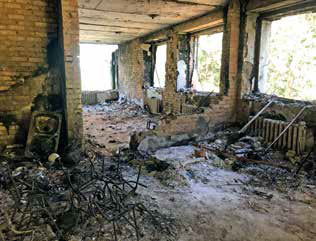
They took him to different places and to meet different people, including a family whose young son asked him if he could help get his dad back.
“It was a moment of great sadness; the child did not fully grasp the meaning of death.” In this context of horror and death, the architect felt vulnerable: “I panicked when the missile alarms went off. At four in the morning, I was picked up by a car to escape to the Polish border. That journey was terrifying: escaping and seeing the destruction of many villages.”
When the warning died down, he continued to hold meetings at Irpin until his last day. He came back to Chile bursting with ideas for reconstruction.
Libraries and Memorial
Parting from Ukraine left Wittig very committed to this cause.
"I feel an urgency, a rush to move forward with the reconstruction," he said. He was officially charged with developing four projects: the reconstruction and remodeling of the public library, the construction of a library and cultural center for the city's society of writers and poets, the creation of a strategic development plan, and the completion of a memorial for the victims of Irpin.
To develop them, he needs economic and human resources. He has only secured part of the 6,000 UF (around $267,000 USD) required to carry out the initiatives, which is why he continues to seek support from Chilean universities and institutions.
“I am in contact with the Ukrainian embassy in Chile on a daily basis. We help each other and ask for collaboration. At the moment, there are no other Chilean projects that are supporting this cause.”
This comes as a surprise to him, so whenever he can, he shares his visit to war-torn Ukraine, to make the case that they need help. “I try to convey that Ukraine urgently needs to receive good news, because every positive development helps them to build hope."
They need their homes to protect them from the cold and to resist a conflict that has oppressed them for so long.
Four Projects for Irpin
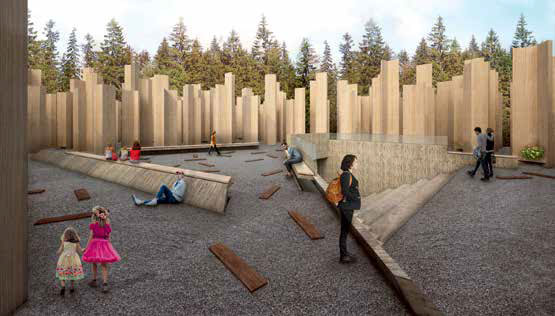
The reconstruction projects commissioned by the City of Irpin to Cristián Wittig and his team are:
- Memorial Project for the Civil Victims of the Irpin and Bucha Massacre (pictured) (1,650 m2).
- Public Library of the City of Irpin (600 m2).
- Library and Cultural Center of the Society of Poets and Writers of the City of Irpin (1,600 m2).
- Master Strategic Urban Development Plan for the City of Irpin
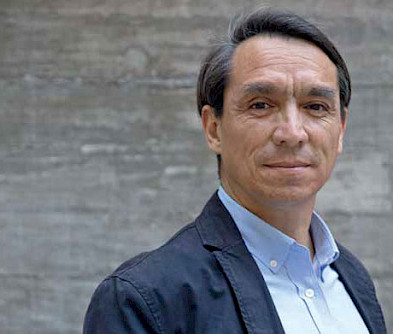
Cristián Alfredo Wittig Grell is 50 years old, married, and has three children. He is an architect from UC Chile and has a Master of Architecture Degree in Housing and Urbanism from the Architectural Association School of Architecture, in London, United Kingdom.
He has worked as a consultant for ECLAC and participated in the reconstruction of Chilean areas destroyed by the 2010 earthquake. He also has experience in educational reconstruction.
He is a managing member of the consultancy Thought and is currently an international consultant for the reconstruction of Irpin, Ukraine.


